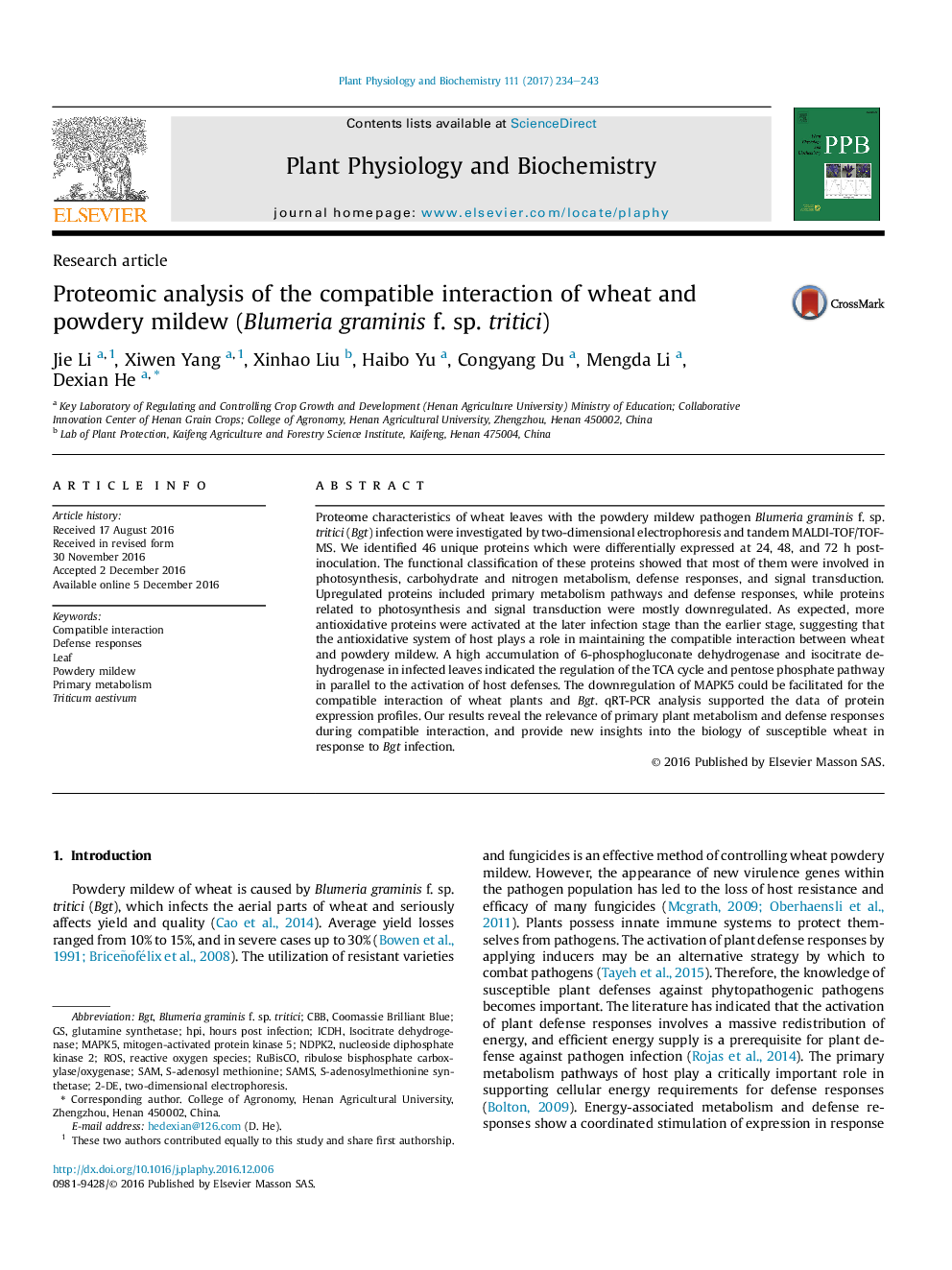| Article ID | Journal | Published Year | Pages | File Type |
|---|---|---|---|---|
| 5515548 | Plant Physiology and Biochemistry | 2017 | 10 Pages |
Abstract
Proteome characteristics of wheat leaves with the powdery mildew pathogen Blumeria graminis f. sp. tritici (Bgt) infection were investigated by two-dimensional electrophoresis and tandem MALDI-TOF/TOF-MS. We identified 46 unique proteins which were differentially expressed at 24, 48, and 72Â h post-inoculation. The functional classification of these proteins showed that most of them were involved in photosynthesis, carbohydrate and nitrogen metabolism, defense responses, and signal transduction. Upregulated proteins included primary metabolism pathways and defense responses, while proteins related to photosynthesis and signal transduction were mostly downregulated. As expected, more antioxidative proteins were activated at the later infection stage than the earlier stage, suggesting that the antioxidative system of host plays a role in maintaining the compatible interaction between wheat and powdery mildew. A high accumulation of 6-phosphogluconate dehydrogenase and isocitrate dehydrogenase in infected leaves indicated the regulation of the TCA cycle and pentose phosphate pathway in parallel to the activation of host defenses. The downregulation of MAPK5 could be facilitated for the compatible interaction of wheat plants and Bgt. qRT-PCR analysis supported the data of protein expression profiles. Our results reveal the relevance of primary plant metabolism and defense responses during compatible interaction, and provide new insights into the biology of susceptible wheat in response to Bgt infection.
Keywords
SAMsICDHBlumeria graminis f. sp. triticiRuBisCOhpiSAM2-DECBBBGTCoomassie Brilliant BlueROSS-adenosyl methionineS-Adenosylmethionine synthetaseTwo-dimensional electrophoresisIsocitrate dehydrogenaseLeafCompatible interactionribulose bisphosphate carboxylase/oxygenasehours post infectionPrimary metabolismDefense responsesPowdery mildewGlutamine synthetaseTriticum aestivumReactive oxygen species
Related Topics
Life Sciences
Agricultural and Biological Sciences
Plant Science
Authors
Jie Li, Xiwen Yang, Xinhao Liu, Haibo Yu, Congyang Du, Mengda Li, Dexian He,
